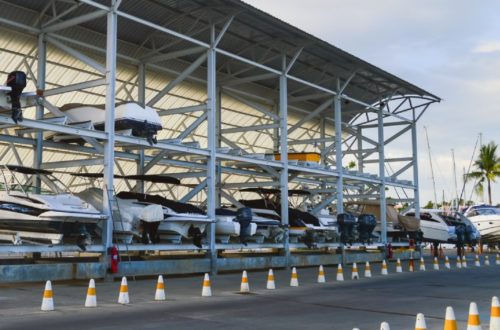How to Pack Light for Trips: Essential Tips and What to Leave Behind

How to pack light for trips involves choosing versatile clothes, cutting down toiletries, and employing clever hacks like packing cubes and digital checklists. Begin with a 7 to 10 item capsule wardrobe that combines layers and quick-dry fabrics. Weigh bags to keep under airline limits. Back up documents to the cloud and stash must-haves in a mini-size personal item. The following sections dissect lists and examples, step-by-step, of packing light.
The Packer’s Mindset
Pack for probable, not every edge case. Retain what you will utilize—interrogate each piece by weight and functionality. Lighter bags increase comfort, reduce airport stress, and provide flexibility on the ground.
Ditching “Just in Case”
Drop FEAR-Based Stuff. If it solves a rare, low-impact risk, skip it and resort to local shops if necessary. Nearly every city has basics within a few minutes’ walk and many hotels even stock toiletries.
Draft a list that removes backups: no duplicate chargers, no spare jeans, no second jacket unless weather data demands it. Overpackers can monitor what comes back unused. After each trip, record what you never reached for and cull it next time.
Keep emergencies lean: a flat, 20 to 30 gram first-aid sleeve, plasters, antiseptic wipes, and only essential meds in original labels. Anything more than that, purchase in person.
Give yourself room—one fourth of the bag left empty—to quicken repacking and absorb trip leftovers.
Embracing Repetition
Schedule re-wear. Swap and swap, tolerate small repeats, and wash while on the road. On long trips, a sink wash is better than hauling weeks of fabric. Construct around neutrals (black, navy, gray, beige) for quick mix and match.
Valuing Mobility
Opt for a sub-2 kg carry-on or 20–30 L backpack with a hard frame sheet and padded straps. Pack with the mindset of only packing what you can throw up into an overhead bin or lug three flights upstairs effortlessly.
Large bags constitute transfers delays, awkward buses, and walking tours become a burden. Less to lug around leads to less stress, more time, and more affordable, speedier stops. Hand-wash a couple items each night to keep volume down, and experiment with this at home before you leave.
Strategic Packing Techniques
Pack to a formula, not whim. Use layers, dual-use items, and packing organizers to trim mass and bulk while remaining prepared for changes in weather and itinerary during your travels.
The Capsule Wardrobe
Build an 8 to 12 item kit for a week or more: four tops, three bottoms, one light jacket, one mid-layer, one dressier piece, and two utility items like a base layer and a packable rain shell. Review 10 to 14 outfits before you actually pack to cross-check variety.
Layering is the essence. Thin mid-layers over breathable tees navigate cool mornings, while a rain shell tops the system for wind and showers.
Smart tip: Wear your bulkiest item on the plane.
Accessories shift tone without bulk. A scarf, belt, or compact jewelry shifts casual to smart. Thread necklaces through straws or use a pill organizer for rings and studs.
Use a baseline: one hat, two pairs of shoes, three bottoms, four tops, five socks, six underwear. Compression packing cubes and organizing sets by day or activity.
Fabric Selection
Select wrinkle-resistant, fast-dry, odor-managed fabrics. Merino and premium synthetics like nylon and polyester blends cover the majority of bases.
Choose light tees, underwear, and socks in merino or blends for multi-day wear. Avoid heavy jeans and bulky knits. Layer thin fleece, down, or grid layers stacked for warmth. Purchase pieces designed to stand up to heavy wash cycles and abrasion. Flat seams and gussets aid durability.
The Footwear Formula
Carry two pairs only: one all-day walking shoe and one light sandal that fits most outfits and venues. To maximize your travel wardrobe, stuff socks in shoes and pack them heel-to-toe at the bottom inside your travel backpack. Wear hiking boots or the bulkiest pair on travel days to save space in your lightweight bag.
Toiletry Tactics
To minimize waste during travels, consider using packing organizers like zip bags to contain messes and keep tiny finds separate. A lightweight bag or collapsible day pack can carry a tiny wash kit for gyms or side excursions, enhancing your travel experience.
Digital Minimalism
When packing for your travels, include essentials like your phone, a charger, and perhaps a tablet or e-reader, while leaving bulky items like laptops behind unless necessary. Consider using packing organizers for your cables and adapters, and pre-download travel guidebooks and maps for your long trip.
Mastering Your Space
Clever design shrinks mass, minimizes hassle, and carries you through mobs, making it essential for adventure travel. Practice makes perfect, and before long you will pack quicker and lug less with effective packing tips.
Packing Cubes
Sort by function: one cube for tops, one for bottoms, one for sleep or gym gear. For a multi-week journey through mixed climates, assemble warm layers so you can access them quickly when the weather changes.
Compression cubes are a lifesaver when you’re trying to shove the ‘one hat, two shoes, three bottoms, four tops, five socks, six undies’ mantra into a 35 to 40 L carry-on. They eliminate extra air and maintain flat piles, which mitigates the all-to-common 23 percent of them that never get worn.
Designate one cube as a laundry bin to contain smells and grit. Color-code or add small labels on zipper pulls. Heavy cubes sit low near the wheels or back panel to maintain the center of gravity.
Rolling vs. Folding
Roll light knits and sport tees to conserve room and reduce wrinkles. It nests beautifully in compression cubes.
Fold structured items, such as button-downs, chinos, and blazers, to retain form. Stuff them in a slim folder or against the bag’s back panel. Mix up the styles by texture and bulk. Then test in your own bag: load, shake, stand upright, and check if layers stay locked. Put on your heaviest coat or boots on travel days to save room.
Dead Space
Cram socks, underwear, or chargers into your shoes. Tuck in a zip pouch of toiletries. Everything should be in sample sizes. For carry-ons, TSA limits containers to 3.4 ounces, including toothpaste.
Stuff belts into cube gaps, sunglasses case, a compact rain shell. Use outer pockets for passport, headphones, snacks, and a pen. Quickly go through security checkpoints and baggage claim exits.
Give it one last empty corner sweep, then weight balance low. Packing light enhances security and peace of mind because everything has its designated spot.
The Right Luggage
Choose bags that fit airline regulations, your itinerary, and your transportation needs. The right travel gear arrangement gives you the freedom to glide through throngs, bypass claim lines, and change course without angst. Aim for 1 carry-on if possible, preferably close to 22 by 35 by 56 cm (approximately 9 by 14 by 21 in). Maintain a total load close to 10 percent of your body weight, as 7 kilos is perfect for many. Utilize packing tips to pack for the optimal scenario and purchase your way out of jams while on the road.
Carry-On vs. Checked
Using a lightweight bag as a carry-on reduces wait times and the risk of lost baggage. It encourages you to follow the 10% rule for weight management, ensuring you don’t over-pack. A main bag and a personal item should hold tech, medications, and valuables, keeping everything crucial within view during your travels.
Only check baggage when necessary, such as for bulky items like tripods or steel-toed boots. Always check the weight and size limits of your airline, as most have restrictions for cabin and checked luggage. Essentials like your passport and charger should be kept in your personal item for easy access.
While there are advantages and disadvantages to this packing strategy, maintaining a well-organized travel backpack can significantly enhance your travel experience. By keeping to the essentials and understanding your airline’s baggage policies, you can avoid excess baggage fees and ensure a smooth journey.
- Carry-On: Faster exit, fewer fees, tighter size and weight limits, limited liquids.
- Checked: More volume, fewer onboard rules, risk of delay or loss, claim wait.
Hard vs. Soft Shell
Hard shell resists crush, adds water resistance, and shields electronics. It’s simple to wipe down, but bag room can be rigid and fixes demand more.
Soft shell provides expandability and front pockets for quick grabs. It fits into overhead bins or buses. Look for abrasion rating, corner guards, and zipper gauge to determine if your luggage is durable.
Match to habit: digital kit or fragile optics favor hard. Mixed loads and tight transit favor soft.
Wheels vs. Backpack
Wheeled suitcases shine on smooth floors and long terminals. Backpacks come out ahead on stairs, cobbles, and trails.
Test the carry comfort when loaded and for distance. Consider the transit mode, hotel with or without elevators, and your back. Many travelers buy two: one wheeled and one backpack for different trips and seasons.
The Unseen Weight
Weight you still carry unlogged still drags you down. Additional things sap strength, increase danger on stairs and rocky terrain, and restrict independence to explore. Most explorers find peace in packing light, utilizing packing tips for a lightweight bag, because fewer options mean less anxiety on the go.
Emotional Baggage
Sentimental items pile up fast: old tees, “lucky” gadgets, backup notebooks, spare camera bodies. They mostly lie dormant but contribute pounds that ache your back and clench your hand and increase drop hazard on busy concourses.
Keepsakes are tiny and light. Grab a coin, ticket stub, or flat patch. Shift bulk to digital: scan paper notes, photograph museum guides, and save voice memos. Digital memories weigh nothing in your bag.
Oversized bags slide, break lenses, and bang ankles. They drag you down on crowded stairs, buses, or ferry ramps. That drag racks time and steals mood. It harms safety; an oversized roller diverts your attention in crowded intersections or during an evacuation.
Set a rule: one pocket for mementos, then stop. Invest the weight savings in range of motion. Opt for experiences, an additional hour wandering down a side street, versus a ceramic mug that chips in transit.
Pre-Trip Anxiety
Construct a closed packing list a week in advance, noting the item, mass (g), and use-case. This minimizes last-minute panic and the reflex to throw in ‘just in case’ electronics, clothes, and accessories that become invisible weight. Utilize packing organizers to keep your travel gear efficient.
Pack 24 to 48 hours in advance, and perform a load test: walk 500 meters, up and down stairs, with the travel backpack. If the strap bites or balance feels off, ditch low-utility items. This minor test prevents stumbles down the road.
Believe in your scheme. Lock the list and don’t throw on extras come departure day! Overpacking frequently begins with fear, not necessity.
Turn your gaze to the journey. Imagine how a lighter bag enables you to take detours, jump on crowded buses, and walk for miles without exhaustion. Light packing makes for calmer, safer travel.
Conclusion
Mastering how to pack light for trips ultimately means trusting your system, trimming the excess, and embracing the freedom that follows. A lean kit clears mental space, sharpens mobility, and turns every detour into an easy yes. With practice and a steady hand against last-minute additions, you’ll travel farther, stress less, and move through each journey with confidence and clarity.
Would you like to receive similar articles by email?





